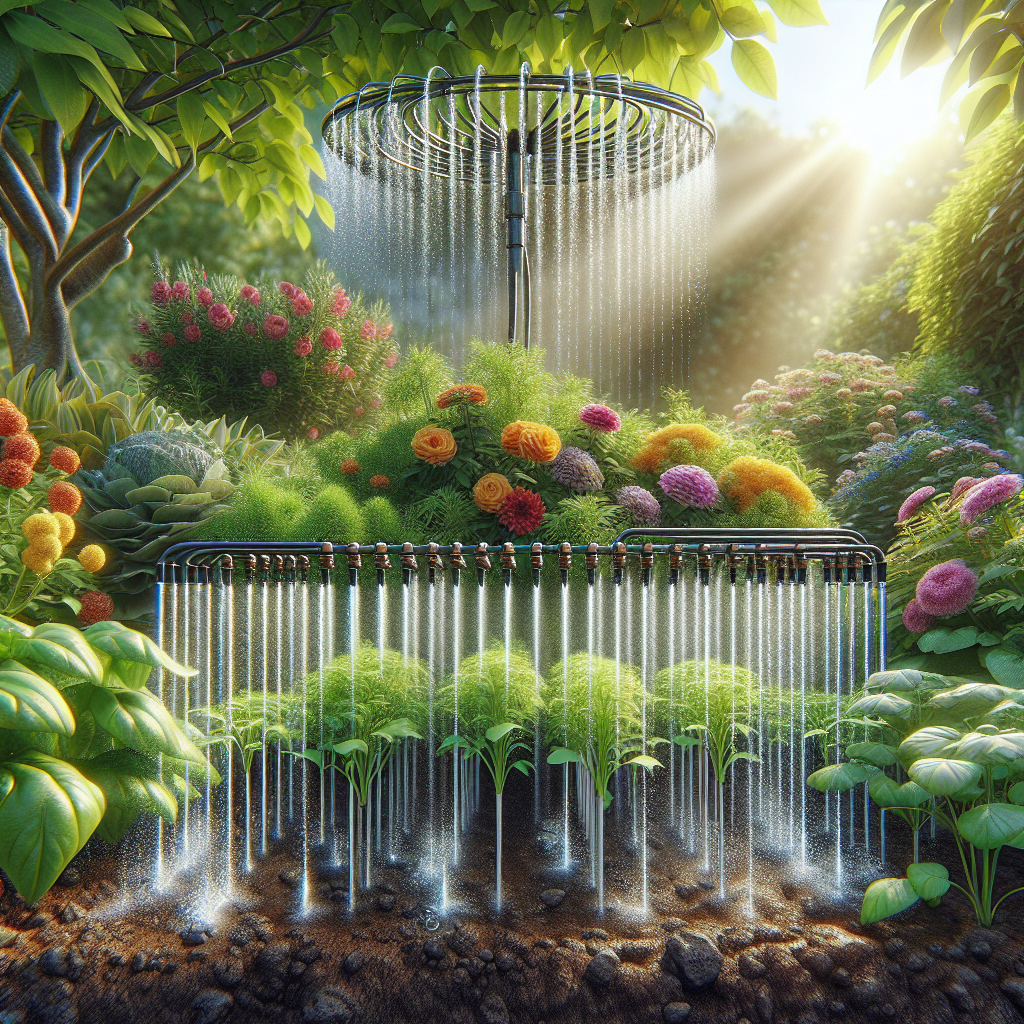Sustainable gardening practices have become increasingly important in recent years as concerns over water conservation and environmental impact continue to grow. One method that has gained popularity among gardeners looking to reduce their water usage and promote sustainability is slow drip irrigation.
Slow drip irrigation is a method of watering plants that delivers water directly to the roots in a slow and steady manner, allowing for more efficient water uptake and reducing wastage through evaporation or runoff. This method can be used in both small-scale gardens and larger agricultural operations, making it a versatile and effective tool for promoting sustainable gardening practices.
One of the key benefits of slow drip irrigation is its ability to minimize water wastage. Traditional methods of watering, such as overhead sprinklers or hand watering, can lead to significant amounts of water being lost through evaporation or runoff. In contrast, slow drip irrigation delivers water directly to the root zone where it is needed most, ensuring that plants receive an adequate supply of moisture without any unnecessary waste.
By using slow drip irrigation, gardeners can also help to conserve water resources. With increasing pressure on freshwater supplies around the world, it is more important than ever to find ways to use water more efficiently in our gardens and landscapes. Slow drip irrigation allows gardeners to tailor their watering schedules to meet the specific needs of each plant, helping to ensure that no more water is used than necessary.
In addition to its water-saving benefits, slow drip irrigation can also improve plant health and growth. By delivering water directly to the roots, this method encourages deeper root growth and stronger plants. In contrast, traditional watering methods can lead to shallow root systems that are more susceptible to drought stress and other environmental factors.
Another advantage of slow drip irrigation is its versatility. This method can be used in a wide range of garden settings, from raised beds and container gardens to row crops and orchards. It can also be easily customized to meet the needs of different types of plants, allowing gardeners to create tailored watering schedules for each variety.
One common misconception about slow drip irrigation is that it requires expensive equipment or specialized knowledge to set up. In reality, there are many affordable and easy-to-use kits available on the market that make it simple for anyone to install a slow drip system in their garden. These kits typically consist of tubing, emitters, connectors, and a timer that controls the flow of water.
When setting up a slow drip irrigation system, it is important to consider factors such as soil type, plant spacing, and weather conditions. By taking these factors into account when designing your system, you can ensure that your plants receive the right amount of water at the right time without any unnecessary waste.
In addition to using slow drip irrigation in their own gardens, many gardeners are also incorporating this method into community gardening projects and urban agriculture initiatives. By promoting sustainable practices such as slow drip irrigation at a larger scale, these projects are helping to reduce overall water usage while also providing fresh produce for local communities.
Overall, slow drip irrigation is an effective tool for promoting sustainable gardening practices by reducing water wastage, conserving resources, improving plant health and growths,and providing flexibility and versatility that suits various types pf gardens. As concerns over environmental impact continue grow,it’s likely thgat more gardeners will turn toward this method as an eco-friendly alternative.water sources continue dwindle,slow dip iirrigation offersaparticularly promising solution for those lookingto reduce theirwater usewithout compromising onplant health or yields.













